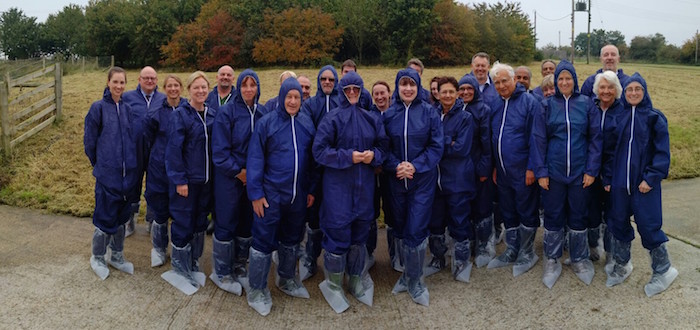Gwyn Jones, chairman of the Responsible Use of Medicines in Agriculture (RUMA), explains what happened when a group of high profile medics visited a pig farm to find out more about antibiotics.
 This week, 20 senior doctors and medical professionals, including chief medical officer Dame Sally Davies, undertook a fact-finding mission to uncover what’s really going on around antibiotic use in agriculture.
This week, 20 senior doctors and medical professionals, including chief medical officer Dame Sally Davies, undertook a fact-finding mission to uncover what’s really going on around antibiotic use in agriculture.
Stemming from a letter to the Health and Defra Secretaries of State, which called for an immediate ‘UK-wide ban on the routine preventative mass medication of animals’, the visit – suggested by RUMA – took almost a year to organise, such was the seniority of the people involved.
Many pig producers might baulk at the thought of opening up the doors of a large commercial pig breeding operation when the sector still faces sustained action by animal rights and vegan groups, intimidation of some farming families, incursions and disruption to daily animal movements. That the sector has been battling its position as media ‘whipping boy’ of the antibiotic resistance issue since headlines about colistin resistance in pigs in China emerged in November 2015, simply adds to the fears.
But engaging with this delegation of medical VIPs – organised by Medact, a medical research, education and campaign group – was a wholly positive experience. The visit, kindly hosted by Bedfordia Farms in association with the National Pig Association, took the group through farrowing to weaning, service and pregnant sows.
While managing director Ian Smith showed off the family farming business’ newer housing and gadgets, he and his pig production manager Christian Andersen didn’t shy away from farrowing crates, older buildings with ACNV systems, or groups of squealing, pregnant sows jostling over automatic feeders.
While the farm is a below-average user of antibiotics and has managed to reduce use by a further 80% since 2015, the unit is representative of many pig farms today: a range of new and old technologies, varying infrastructure and its own particular challenges. Despite standard biosecurity measures, visitors are not protected from smells and noise behind glass screens.
The reaction? Mixed, as one would expect. However, all in the group left with a better understanding of what commercial pig farming involves.
I left thinking that in the One Health debate, we as professional animal keepers in farming have it easier, in many ways. We have direct control over the management of our animals and can ensure they are healthy to start with – healthcare professionals also have to deal with the complex emotional, social and lifestyle challenges that are part and parcel of being human.
So let’s keep building on this advantage and ensure that as well as fully playing our part in the One Health battle against antibiotic resistance, we have the courage to listen and understand others’ views as well as engaging and explaining our own.




